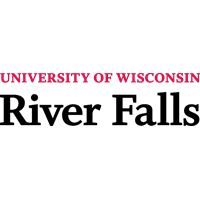Below is a summary of the abstract you submitted. Presenting author(s) is shown in bold.
If any changes need to be made, you can modify the abstract or change the authors.
You can also download a .docx version of this abstract.
If there are any problems, please email Dan at dar78@pitt.edu and he'll take care of them!
This abstract was last modified on June 1, 2016 at 2:33 p.m..

Arthrobacter sp. ATCC 21022 was the first alternate host selected for widespread use in the SEA-PHAGES program. Arthrobacter is a genus commonly found in soil and many are able to degrade a variety of aromatic compounds, suggesting a possible use in bioremediation. Fourteen schools used this host for phage isolation in 2013-14. Finding phages in Arthrobacter proved to be challenging compared to M. smegmatis, driving development of modifications to the enrichment protocol and plaque screening methods. After that first year, there were 15 sequenced and annotated phage genomes, followed by another 31 genomes the next year. Here we present a comparative genomic analysis of these first 46 Arthrobacter phages from the SEA-PHAGES community. These phages were organized into 10 clusters, designated AK-AU, with two subclusters, and two singletons, Galaxy and Jasmine. An additional 68 phages have been sequenced more recently, resulting in one new cluster (Galaxy is now in cluster AS). All of the other new phages fit into the existing clusters, without additional subclusters, and there are no new singletons. Phages in clusters AO and AR are myoviridae, while the rest are siphoviridae; cluster AM phages have prolate heads. The overall genome architecture of these phages is similar to that of the Mycobacteriophages. Notable differences include the cluster AN phages, with genomes of 15,310-15,640 that essentially include only the structural genes in left arm of a standard phage genome and few regulatory genes. Only one cluster (AQ) has tRNAs, and only one (AS) contains an identifiable integration cassette. Our enrichment methods may be preferentially selecting for lytic phages in this host. Clusters AM and AU share several phams with each other and with Rhodococcus cluster CC and Streptomyces cluster BI. Otherwise, few phams are shared with phages in other Actinobacteria hosts. This may be related to the relatively large genetic distance between Arthrobacter and the other Actinobacteria hosts, and distinct evolutionary paths for cluster AM and AU phages. Phages in these two clusters have much lower %GC (45% and 50%) than Arthrobacter (63%), consistent with their adapting to multiplication in Arthrobacter relatively recently. Also noteworthy is the relative degree of genetic isolation observed for Arthrobacter phage clusters, which is higher than that observed in Mycobacteriophage clusters. Few phams are shared between clusters other than AM and AU, and some of these shared phams encode tail proteins in the myoviridae clusters AM and AR. An average of 89.6% of phams in each cluster are present only in that cluster. This may reflect the nature of the environmental hosts and varying evolutionary histories of these phages. These results are shedding new light on the processes of phage evolution, which will continue to be illuminated by the discovery of additional phages in other Actinobacteria hosts.

